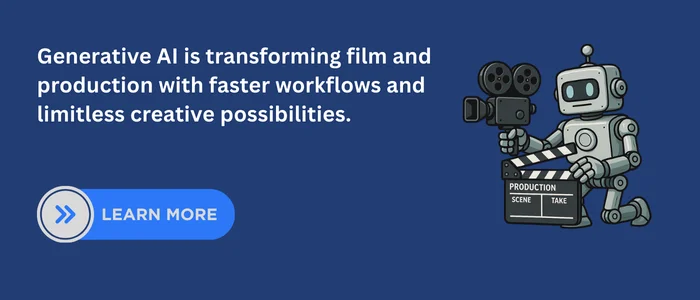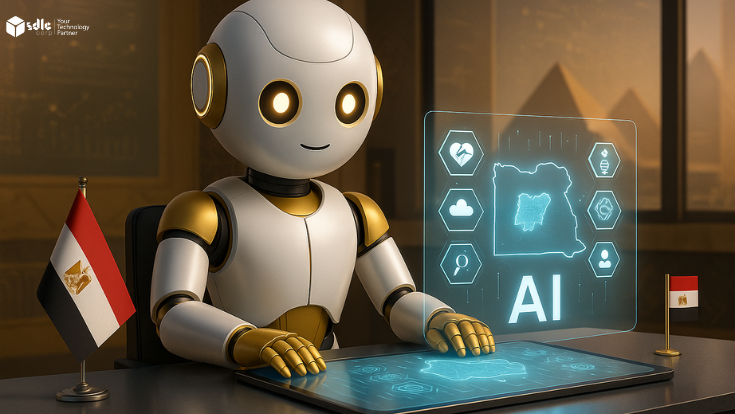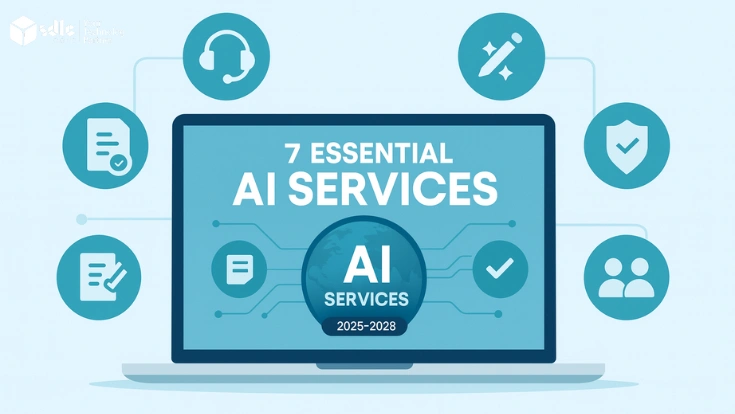Introduction
Cinema is entering a new era powered by Generative AI, as transformative as sound, color, and CGI. Studios like Disney, Warner Bros., and Netflix are investing billions in AI Development Solution to reshape production. Over 85% of major studios now integrate AI, with generative models leading adoption. From AI-driven scriptwriting to automated post-production, workflows are faster and smarter. Traditional pipelines struggle with delays, costs, and post-production consuming 60% of timelines.
Generative AI solves these challenges through intelligent content, photorealistic visuals, and adaptive automation. The result is a fundamental reimagining of filmmaking, empowering both studios and independent creators.
Generative AI in Film and Production Pipelines
Film and production teams handle scripts, storyboards, visual assets, sound design, and post-production workflows. Generative models support these processes by assisting with ideation, asset generation, and workflow acceleration. Many studios explore these capabilities through Generative AI development services when integrating AI into early-stage production pipelines.
1. Understanding Generative AI in Cinematic Context
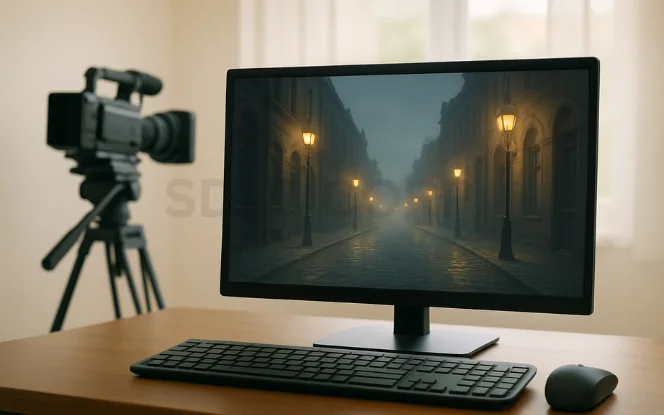
Technical Foundation and Core Technologies
Generative Adversarial Networks (GANs)
GANs pit a “generator” against a “discriminator” to create visuals that look real. In film, they’re used for character design, texture synthesis, and environment generation, allowing filmmakers to prototype assets quickly with high fidelity.
Diffusion Models for VFX
By reversing noise patterns, diffusion models enable photorealistic images and videos with precise creative control. They speed up concept art, storyboarding, and pre-visualization, cutting design cycles without sacrificing quality.
Large Language Models (LLMs)
LLMs are transforming screenwriting by optimizing dialogue, structuring narratives, and testing alternate storylines. They help writers maintain character consistency while accelerating script development.
Neural Rendering
Neural rendering simulates light, textures, and atmosphere in real time, integrating seamlessly with CGI workflows. The result is cinematic-quality visuals at a fraction of the computational cost.
Read Also : What is Generative AI?
2. Pre-Production Applications and Workflow Optimization
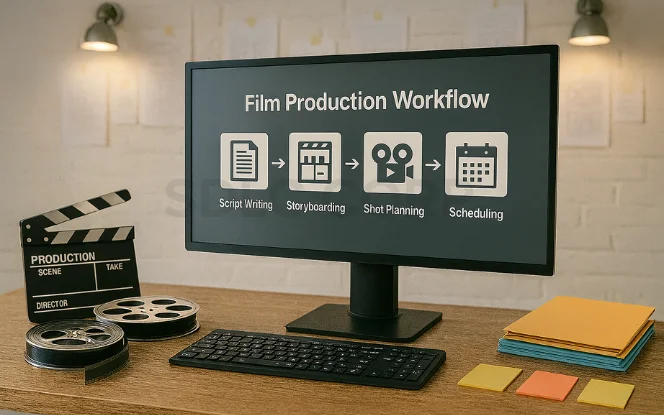
Concept Development & Visual Planning
- AI Storyboard Generation
- AI tools convert screenplay descriptions into sequential storyboards with narrative flow and directorial style.
- Cuts storyboard development time from weeks to hours.
- Enables iterative refinements, giving directors more room for creative exploration.
- AI tools convert screenplay descriptions into sequential storyboards with narrative flow and directorial style.
- Character Design with Diffusion Models
- Facilitates rapid aesthetic variations, costume options, and demographic diversity.
- Production designers can present multiple character prototypes instantly.
- Boosts collaboration between directors, designers, and stakeholders.
- Facilitates rapid aesthetic variations, costume options, and demographic diversity.
- AI-Powered Location Scouting
- Uses computer vision and machine learning to analyze thousands of potential filming locations.
- Ranks options by visual appeal, accessibility, and production feasibility.
- Reduces weeks of manual scouting into a streamlined, data-driven process.
- Uses computer vision and machine learning to analyze thousands of potential filming locations.
Screenplay & Narrative Enhancement
- NLP for Script Development
- Goes beyond grammar checks to provide narrative analysis, pacing adjustments, and character consistency.
- Identifies plot gaps and thematic weaknesses, suggesting intelligent improvements.
- Ensures dialogue optimization tailored to genre conventions.
- Goes beyond grammar checks to provide narrative analysis, pacing adjustments, and character consistency.
- AI Collaborative Writing Tools
- Acts as a co-author, suggesting dialogue refinements, scene transitions, and alternative story arcs.
- Helps writers experiment with multiple narrative pathways while retaining creative control.
- Improves workflow efficiency in scriptwriting rooms.
- Acts as a co-author, suggesting dialogue refinements, scene transitions, and alternative story arcs.
3. Production Phase Integration and Real-Time Applications

On-Set Visualization & Performance Enhancement
- Virtual Production with Real-Time Rendering
- Allows directors to see final compositions live during shooting.
- Reduces post-production workload by integrating CGI backgrounds instantly.
- Boosts flexibility for creative decision-making on set.
- Allows directors to see final compositions live during shooting.
- AI-Powered Performance Capture
- Motion synthesis algorithms ensure consistent character portrayal.
- Analyzes movement, expressions, and voice patterns to fix inconsistencies.
- Preserves authentic emotional delivery across takes.
- Motion synthesis algorithms ensure consistent character portrayal.
- AI-Driven Lighting Optimization
- Uses computational photography to maintain visual continuity.
- Automatically adjusts camera settings, lighting rigs, and color temperature.
- Guarantees cinematic aesthetics under varying conditions.
- Uses computational photography to maintain visual continuity.
Camera & Cinematography Assistance
- Automated Camera Movement Planning
- Spatial AI generates precise, safe, and creative camera trajectories.
- Considers actor movement, scene geometry, and directorial intent.
- Simplifies execution of complex cinematic sequences.
- Spatial AI generates precise, safe, and creative camera trajectories.
- AI Shot Composition Analysis
- Evaluates framing, balance, and harmony using aesthetic scoring algorithms.
- Provides real-time feedback to cinematographers.
- Enhances narrative impact and visual storytelling.
- Evaluates framing, balance, and harmony using aesthetic scoring algorithms.
AI Applications Across Production Stages
| Production Stage | AI Application | Efficiency Gain | Implementation Cost |
|---|---|---|---|
| Pre-Production | Automated Storyboarding | 75% reduction in timeline | Low |
| Production | Real-Time Rendering & Virtual Sets | 50% faster scene previews | High |
| Production | Motion Capture Enhancement & Lighting Optimization | Higher performance consistency & visual continuity | Medium |
| Post-Production | Intelligent Video Editing | 60% faster assembly | Medium |
| Distribution | AI Content Personalization | 40% increase in engagement | Medium |
4. Post-Production Revolution Through Advanced AI Methodologies
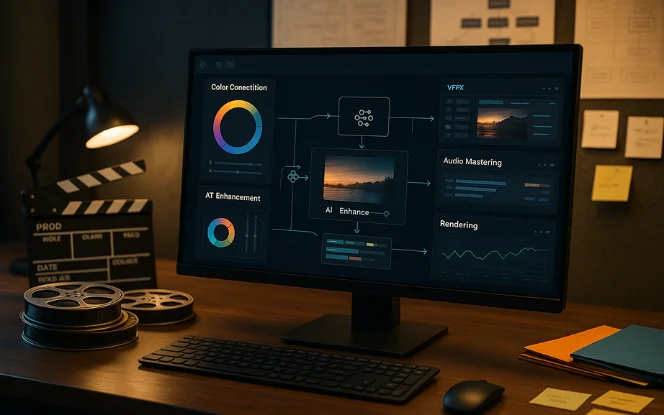
Video Editing & Assembly Optimization
- Intelligent Scene Detection
- Uses temporal analysis algorithms to detect natural cut points, emotional transitions, and scene breaks.
- Reduces manual effort by generating smart edit markers for editors.
- Uses temporal analysis algorithms to detect natural cut points, emotional transitions, and scene breaks.
- Automated Rough Cut Generation
- Machine learning assembles preliminary scene versions from raw footage.
- Considers shot quality, continuity, and narrative flow.
- Cuts initial assembly time from days to hours.
- Machine learning assembles preliminary scene versions from raw footage.
- Pacing Optimization
- Rhythm analysis algorithms refine timing and pacing of edits.
- Analyzes audience engagement, emotion curves, and narrative tension.
- Helps editors achieve maximum storytelling impact.
- Rhythm analysis algorithms refine timing and pacing of edits.
Visual Effects (VFX) & CGI Enhancement
- Photorealistic Asset Generation
- Powered by 3D-aware GANs for environments, character extensions, and atmospheric elements.
- Creates assets that blend seamlessly with live-action footage.
- Powered by 3D-aware GANs for environments, character extensions, and atmospheric elements.
- Texture Synthesis for Environments
- Procedural generation creates vast landscapes, cities, and architecture from minimal input.
- Saves weeks of manual 3D modeling.
- Procedural generation creates vast landscapes, cities, and architecture from minimal input.
- AI Crowd Simulation
- Uses behavioral modeling to simulate crowd dynamics.
- Eliminates the need for thousands of background extras.
- Enhances scale and realism of large scenes.
- Uses behavioral modeling to simulate crowd dynamics.
Color Grading & Audio Post-Production
- AI Color Grading & Correction
- Perceptual models ensure visual consistency across scenes.
- Suggests baseline grades for colorists while preserving creative intent.
- Perceptual models ensure visual consistency across scenes.
- Automated Dialogue Replacement (ADR) Enhancement
- Speech synthesis tools generate natural replacement dialogue.
- Maintains vocal timbre, emotional tone, and delivery style.
- Speech synthesis tools generate natural replacement dialogue.
- AI Music Composition Assistance
- Algorithmic creativity generates orchestral themes, variations, and emotional cues.
- Enhances narrative impact by aligning music with on-screen emotion.
- Algorithmic creativity generates orchestral themes, variations, and emotional cues.
5. Industry Case Studies and Implementation Success Stories
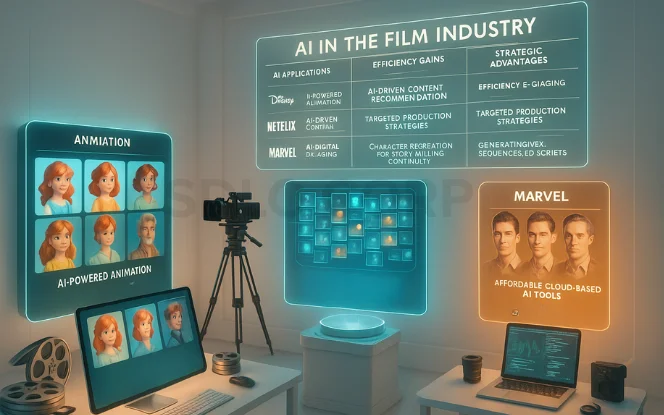
Major Studio Implementations & Strategic Advantages
Disney – AI in Animation
- Cuts production time: AI-powered workflows reduce character animation time by ~40%.
- Enables stylistic flexibility: Neural rendering allows rapid artistic variations without delays.
- Balances quality & efficiency: Maintains Disney’s high creative standards while streamlining workflows.
Netflix – AI for Content Personalization
- Data-driven insights: AI analyzes viewing patterns, demographics, and engagement.
- Smarter production choices: AI recommendations guide what shows to produce or greenlight.
- Boosts satisfaction: Personalized recommendations increase audience engagement and reduce production risks.
Marvel Studios – AI in Character Recreation
- Digital de-aging: Pioneered lifelike actor recreation across different decades.
- Photorealistic transformations: Ensures authenticity while enhancing visual effects.
- Supports storytelling: Maintains continuity across the Marvel Cinematic Universe (MCU).
Read This : Generative AI for Sports
6. Implementation Strategies and Infrastructure Requirements

Technical Infrastructure & Resource Planning
- Hardware Requirements
- AI workloads in film production demand high GPU computing power.
- Enterprise setups often require 32GB+ VRAM, 128GB+ system RAM, and high-speed NVMe SSDs for efficient processing.
- Real-time rendering and large-scale AI models rely on parallel GPU processing for smooth output.
- AI workloads in film production demand high GPU computing power.
- Cloud-Based AI Deployment
- Cloud computing offers scalable alternatives to expensive on-premises systems.
- Providers deliver specialized AI services optimized for film and media production.
- Benefits: lower capital costs, scalability, security compliance, and global accessibility.
- Cloud computing offers scalable alternatives to expensive on-premises systems.
Team Training & Organizational Change Management
- AI Literacy for Creative Professionals
- Focuses on capabilities, limitations, and creative use cases.
- Ensures directors, writers, and designers collaborate effectively with AI systems while retaining artistic control.
- Focuses on capabilities, limitations, and creative use cases.
- Technical Training for Post-Production Teams
- Hands-on training with AI editing, rendering, and VFX platforms.
- Covers workflow integration, quality assurance, and practical application.
- Prevents disruptions by embedding AI into existing production pipelines.
- Hands-on training with AI editing, rendering, and VFX platforms.
- Change Management Strategies
- Addresses cultural resistance and stakeholder concerns.
- Promotes collaboration between AI specialists and creative teams.
- Frames AI as an augmenting tool, not a replacement for human creativity.
- Addresses cultural resistance and stakeholder concerns.
7. Future Outlook and Industry Evolution
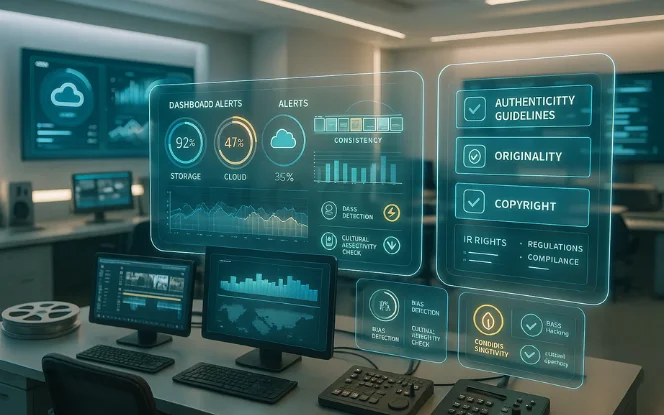
Technological Advancement Predictions
Near-Term Trends
AI-Driven Dubbing & Localization
Studios are already using AI voice cloning to generate multilingual dubs instantly, making global releases faster and more affordable.
Personalized Movie Trailers
AI can now edit multiple trailer versions, tailoring them to specific audiences — action-packed cuts for thrill-seekers, emotional arcs for drama fans, or even region-specific previews.
Generative AI for Indie Creators
Tools like Runway and Pika Labs are empowering independent filmmakers to produce Hollywood-quality visuals on minimal budgets, giving smaller creators access to the same production power as major studios.
Long-Term Innovations
Advanced Neural Architectures
Next-gen AI systems will merge text, visuals, and audio into unified workflows, creating more intuitive human-AI collaboration for filmmakers.
Edge Computing for On-Set AI
Real-time AI processing on production equipment will reduce latency, provide instant feedback to crews, and ensure smoother shoots — even in remote areas.
Quantum Computing (Future Possibility)
Though still experimental, quantum computing may eventually unlock ultra-fast rendering and advanced physics simulations. For now, it remains a long-term vision rather than an immediate solution.
Market Trends & Investment Projections
- Rising Venture Capital Investment
Investment in AI-driven creative industries is accelerating, with venture capital funding flowing into startups focused on film editing, VFX, and storytelling tools. This surge of capital is fueling innovation, leading to specialized platforms designed to make advanced AI technology accessible to filmmakers at every scale.
- Strategic Tech–Media Partnerships
Collaboration between tech giants and media houses is also shaping the future of AI in film. By working together, these partnerships ensure that cutting-edge research is not just experimental but practically applied in real production environments. The result is faster adoption of AI tools that address real industry needs, from streamlined workflows to enhanced audience engagement.
Assessing Creative and Technical Feasibility
Before adopting generative systems, production teams evaluate creative control, data quality, and legal considerations. A Generative AI consulting company can support feasibility analysis, helping teams decide where automation adds value without disrupting artistic intent.
Specialized Talent for Generative Film Systems
As AI becomes part of creative workflows, studios may hire generative AI developers to fine-tune models, manage datasets, and adapt tools for film-specific formats such as VFX or animation pipelines.
Conclusion
The integration of Generative AI in film production is not just a technological upgrade but a paradigm shift that combines creative freedom with operational efficiency. Early adopters already benefit from lower costs, faster delivery, and enhanced storytelling capabilities. However, sustainable adoption requires strategic planning, training, and ethical considerations to ensure AI empowers rather than replaces human creativity.
As the industry evolves, success will depend on embracing collaborative AI frameworks that amplify artistic vision. Production houses investing in AI Development Company today will be best positioned to lead the next generation of filmmaking and storytelling innovation.
FAQs
Q1: What are the minimum hardware requirements for generative AI in film production?
Studios need high-performance GPUs (24GB+ VRAM), enterprise-grade multi-core CPUs, fast NVMe SSD storage, and robust network bandwidth to handle large-scale AI workloads and cloud-based media assets.
Q2: How does generative AI ensure visual consistency across shots and scenes?
AI uses temporal coherence algorithms and style transfer techniques to maintain consistent lighting, color grading, and visual aesthetics. Reference frames and automated QC checks prevent frame-to-frame discontinuities.
Q3: What are the copyright risks of using AI-generated content in films?
Studios must carefully manage training data sources, licensing agreements, and IP ownership. Legal protocols should address derivative works, fair use, and synthetic media disclosure under evolving regulations.
Q4: Can AI-generated content align with a director’s artistic vision?
Yes. Human-in-the-loop AI design ensures directors control aesthetic choices through customizable parameters, style conditioning, and iterative refinements, making AI an enhancer not a replacement.
Q5: What is the typical ROI timeline for AI in film production?
Studios often see measurable efficiency gains in 6–12 months, with full ROI achieved within 18–24 months. Savings come from faster post-production, reduced labor costs, and enhanced creative output.
Q6: How should production teams transition from traditional to AI-integrated workflows?
Start with pilot projects in specific areas, run training programs for staff, gradually phase AI tools into existing workflows, and maintain quality assurance protocols to ensure smooth adoption.

